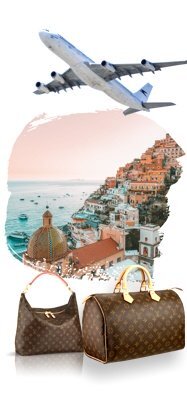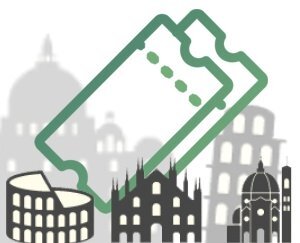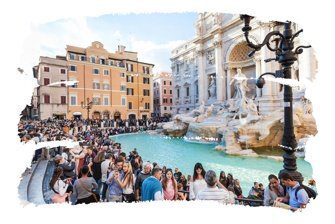A Brief History of Florence
Florence, in antiquity, was a fortified area. The city has a privileged position: it is located at the intersection of the roads that joined the Tyrrhenian coast to the Apennines and, united, led to Rome through the Arno valley. Let’s go to our post of the day: A brief history of Florence. Stay with us and make the most of boot country! Here at Traveling to Italy you can make the trip of your dreams come true!! Also check out our Accommodation in Italy – Tips for your Vacations Section!
Our Introduction
Today I want to present to you just a summary and a brief history of Florence. Of course to talk about Florence, we would have to practically write a book, but in order to help you on the trip, I decided to create this short text gathering the main information about the main Tuscan city, Florence. Read also: What to Do in Florence in Winter?
A Brief History of Florence in Order of Occurrence
Our text will follow a chronology (period from 395 B.C. to 1966) in order to organize the events that took place in Florence in their order of occurrence in time, reporting the actual temporal sequence of past events. Read also: What to Do in Florence with Children?
In 395 B.C.
The capital of Tuscany has a lot of history to be told, steeped in its culture and art. Florence was once an Etruscan city, almost entirely dependent on Fiesole; however, in 395 B.C., the Etruscan civilization was subjugated by the Roman Empire and thus Florentia was founded, which was erected on top of the ashes of the Etruscans.
In 774 and 1115
Soon after the fall of the Roman Empire, Florence was dominated by Goths and Byzantines, while in the Middle Ages, due to its agricultural wealth and being strategically located, Florence managed to stand out, drawing the attention of the Lombards who dominated the city.
Charlemagne conquered the city in 774 and made it part of the Carolingian Empire; jumping to 1115, the city gained its freedom, and the Florentines defeated the imperial vicar, taking possession of nearby castles and villages. Visit Florence in 1 day!
English-speaking group tours in major Italian cities?
In 1125 and 1218
In 1125, Florence succeeded in conquering Fiesole, allied itself with Pisa in the fight against Siena, and disputed commercial relations with the Holy See. Seeking hegemony over the region of Tuscany, Florence went to war against Pisa in 1218.
Between the twelfth and thirteenth centuries, Florence faced the Guelphs and Ghibellines, peoples who were also disputing the succession to the crown. The Guelphs defended papal power and did not want the privileges of the nobles, while the Ghibellines had the aid of the German emperor, who opposed papal power.
In 1293
In this period the nobility was slaughtered, and in 1293, all the nobles were expelled from power, which began the period of the Second People. At this point in history, Florence was already the most important city in Tuscany, and Pisa had lost the war to Genoa in 1284, while Siena was beginning to decline. Visit Florence in 2 days!
In 1252 and 1326
Despite the religious, economic, and political conflicts, Florence outdid itself and eventually became a powerful commercial center for all of Europe. As a celebration, gold florins were minted in 1252, coins used for more than three centuries. In 1326, new commercial activities emerged, and the bank was born. That’s right, the bank was created in Florence.
In 1406
In 1406, Florence conquered Pisa and became a maritime power, attracting large numbers of people to the city. Florence flourished, and many aristocrats invested there for the construction of chapels and religious buildings, as well as transforming their houses and farms into real palaces.
In artistic terms, Florentine art began the Renaissance in the early fifteenth century. Already in the fourteenth century, the Florentine polity, which was administered by merchants, continued to sustain itself with an army of mercenaries. Visit Florence in 3 days!
In 1434
The hegemony of the Medici, which was the richest and most influential family in the entire history of Florence, began in this period, at the beginning of the fifteenth century.
It is important to remember that the Medici did not come from the feudal nobility or a dynasty; they trampled on social and economic ascension slowly and inexorably, in a discreet but powerful way. How? They were experts in art negotiations and various other businesses.
In this way, the Medici family wrote much of the history of Florence for almost 350 years! They were responsible for the historical and economic growth of the city and made Florence an undisputed cultural center.
In 1492
The Medici fell with the death of Lorenzo the Magnificent, and when his son Pietro took power to command the city in 1492, the Florentines rebelled against him and expelled him from the city, thus ending the first period of Medici rule.
The most powerful merchants organized a republic, and Machiavelli dealt with the diplomatic aspects of the new governmental structure. Art schools sprang up everywhere, and so Florence reinforced its status as a cultural city, although many moved to Rome or Milan, wealthier and more politically stable cities.
In 1512, 1527, 1530 and 1555
As early as 1512, with the help of the Spanish, the Medici returned to power for another fifteen years, and on May 16, 1527, they were defeated and the Republic was established once more. However, in 1530, Emperor Charles V had the support of Pope Clement VII to occupy the city, and Alessandro dei Medici, Charles’s son-in-law, was created Duke of Florence. His successor, Cosimo II, conquered Siena and integrated its territory in 1555. Also Read: What Are The Top 10 Must-See Sights In Florence?
In 1737
After that, the Medici family returned to full power and dominated for another two centuries. In 1737, the Duke of Lorraine, husband of Maria Theresa of Austria, assumed power, and the Medici were definitively defeated from the political life of Florence, which was added to the territories of the Austrian crown.
In 1865 and 1871
Soon after the Congress of Vienna, Tuscany became one of the regions of the Kingdom of Italy, and Florence was the capital of the Kingdom of Italy from 1865 to 1871, being the seat of the nation’s first parliament.
During the Second World War, the accesses to the city were destroyed, i.e., the bridges, and only the Ponte Vecchio was spared, especially for its artistic value.
In 1966
In 1966, the tranquility of Florence was shaken by another tragic calamity: a flood that claimed the lives of 34 people, as well as directly affecting a large part of the artistic heritage. The heritage was saved thanks to volunteers from all over the world who volunteered to save the affected works, although several great works were lost.
Watch this video and discover the best places to sleep in Florence!
Subscribe to our channel and receive more videos with information and tips about Italy. Don’t forget give this video a thumbs up! 😉
Conclusion
A Brief History of Florence – War and Peace Destruction and Rebirth. Art, culture, and leisure This is Florence. It is an unquestionably assertive destination for anyone who decides to travel to Italy.
Do you feel unsafe traveling?
If you feel insecure or don’t have time and need help organizing your trip, don’t hesitate to reach out to me! I will love to help you make your dream trip to Italy come true. And how can I do that? Keep reading this post until the end, and you will understand how we make your life and your trip easier.
Did my post help you, or do you still have questions? Leave your comment below, and I’ll get back to you!
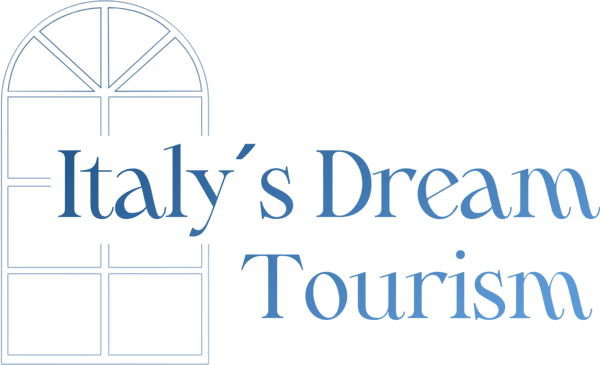
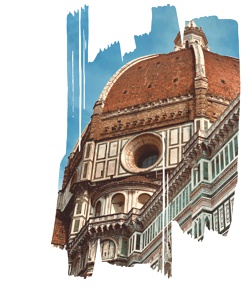 PLACES TO STAY IN FLORENCE
PLACES TO STAY IN FLORENCE